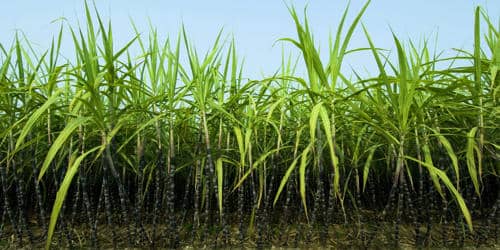The Sugarcane
Introduction: Sugarcane is the world’s most important sugar crop. In Bangladesh, the sugar came is a “Kaharitf”, autumn, crop. In many parts of Bangladesh, we can see at that season large fields of it ready for cutting. Sugarcane is an important cash crop of the country accounting for only 2 percent of the total cropped area of the country but contributing over 7 percent of the total value of its agricultural production. The sugar-cane is a long plant, with a long thick stem and long green leaves at the top. The stem has joints. It has no branches. It is the stem or cane that contains the sweet juice from which sugar is male.
Kinds: Sugar-canes are of many kinds. Of them the puri, the Bambaya, and the Kajal are famous. Some sugar canes are yellow in color and some are back. Again, some sugar-canes are thick and some are thin.
Where grown: The sugar-cane grows in plenty in the countries with a moist and warm climate. Sugarcane is a tropical plant belonging to the cane family. It grows well in areas with 20°C to 26°C temperatures. It grows in Bangladesh, India, Pakistan, Java, China, Malaysia, Cuba, The U.S.A, and some other countries.
How grown: (Method of cultivation) the cultivation of sugar-cane is not very hard. It does not grow from seeds. It grows from its joints and upper stalks of mature stems. The joints and tops of the sugar-canes are cut down and planted in the wet ground. It is plated in February and March when they are removed. Before the plantation of the sugarcane, the lands are to be plowed, harrowed, and manured well. The crop requires a long rainy season of about 8 months’ duration in summer with about 150 cm of rainfall. Rainfall deficiency may be made up through irrigation. The sugar-cane matures in a year.
Usefulness: Sugarcane is molasses used in making sugar. The crop provides raw material to the sugar industry which is the second largest industry of the country providing employment to over 4 lakh industrial workers. It is also used in making Gur and mosques. Sugar, Gur, and molasses are used in huge quantities in sweetmeats, cakes, biscuits, Syrups, etc. We can sugar in tea. Village people use Gur and molasses for making various kinds of Pitha’s all the year-round. Besides providing sugar, gur, and khandsari it supplies molasses for the alcohol industry and bagasse for the paper industry. On the whole, sugar is used in huge quantities throughout the world. Besides the stem is chewed raw as a sweetmeat for the sake of the sweet juice.
How sugar and Gur/molasses made: Most of the sugar-canes go to the sugar-mills to make sugar. There they are first crushed in heavy presses or under rollers, which squeeze out the sap or juice. The juice is then treated with chemicals, and heated in shallow pans until the water all goes off in Vapour, Leaving behind the sugar. This further treated, and part of becomes the white sugar crystals, and part thick brown molasses or treacle. Villagers also produce Gur from sugar cane.
Conclusion: Bangladesh is the home of the sugar cane; and yet most of the sugar we eat in Bangladesh comes from other counties. More sugar mills should be set up and sore sugar each should be produced in Bangladesh because the country needs a greater quantity of it. So, the people and the government of the country should take proper measures for its increased production.
















